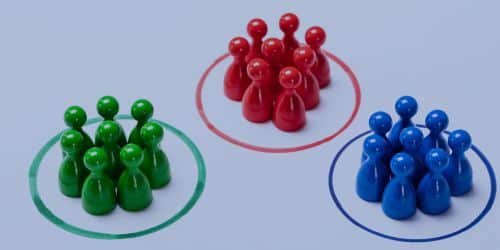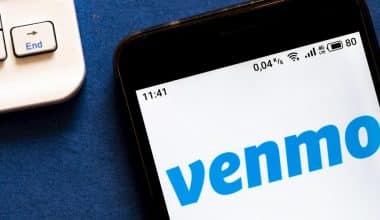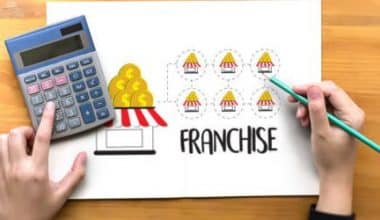Scientists and other researchers use experimentation to gather data, validate theories, develop new techniques, and assess the efficacy of ongoing investigative approaches. Researchers evaluate outcomes and draw conclusions using both control groups and variables, which research teams and the scientific community then check for correctness. You can build the ideal procedures for carrying out studies in your research profession by becoming knowledgeable about the many forms of control groups. We define and give an example of a control group in an experiment, and discuss the distinction between a control group vs an experimental group in science in this article.
What is a Control Group Experiment?
In a scientific experiment, a control group is a subset of participants who are not included in the main experiment and whose outcomes are unaffected by the independent variable under study. By isolating the effects of the independent variable on the experiment, this can help rule out other possible explanations for the findings of the experiment.
Types of Control Groups
In psychology studies, numerous various types of control groups could be used. A few of these are:
#1. Positive control groups:
In this instance, researchers are interested in finding out more about the effects of treatment changes despite already knowing that a particular treatment is successful. In this instance, the experimental group is given a variant so that researchers can learn more about how it performs and contrasts with the control, while the control groups are given the treatment that are known to be effective.
#2. Negative control group:
The participants in this kind of control group are not treated. The group that did not experience any change or results can then be contrasted with the experimental group.
#3. Placebo control group:
These kinds of control groups get a placebo treatment that they think will work. Researchers can assess the placebo effect’s effects and how the experimental treatment stacks up against the placebo treatment thanks to this control group.
#4. Randomized control group:
To help ensure that the members in the control groups appropriately reflect the demographics of the larger population, this kind of control group uses random selection.
#5. Natural control group:
This kind of control group is organically chosen, frequently due to environmental variables. Researchers may contrast those who have suffered trauma as a result of war with those who have not, for example.
Using a Control Group in an Experiment
A control group and at least one treatment group are present in most research. The individuals in an ideal experiment begin with the same general characteristics across all groups, with the exception that the subjects in the treatment groups get therapy. You can ascribe differences observed after the experiment to the treatments when the groups are otherwise comparable before treatment begins.
Subjects are randomly assigned to the treatment and control groups in randomized controlled trials (RCTs). The groups will be comparable when therapy starts thanks to this technique. Therefore, differences between groups at the end of the research are most likely due to treatment effects. RCTs are regarded as the ideal by statisticians.
Randomized groups are either impractical for observational research or are not used because they are expensive or difficult. It can be challenging to appropriately quantify the treatment effect at the end of these studies since the characteristics of the control groups at the beginning of the trial may differ from those of the treatment groups.
Who Uses Control Groups?
The following industries conduct experiments using control groups:
- Medicine: To assess the effectiveness of novel medications, potential side effects, and the response of various illnesses to various treatments, researchers in medicine use control groups.
- Psychology: Psychologists can analyze the behavior and mental health of particular groups of people using control groups.
- Marketing: To evaluate the success of various advertising efforts and identify the demographics of their target clients, marketers may use control groups.
Why Control Groups Are Important
The control groups do not get any kind of treatment, but it is nevertheless very important to the experiment. This group acts as a reference point, enabling researchers to assess the effects of changes to the independent variable by contrasting the experimental group with the control group.
Therefore, any variations between the two groups are the product of the independent variable’s alteration. With the exception of manipulating the independent variable in the experimental group, the experimenters follow the same steps with both groups.
Control Group Example
An example of a typical science control group that various sectors might employ in their research is as follows:
Example of a Negative Control Group
To educate students on how to recognize the independent variable, negative control groups are particularly popular in science fair experiments. a straightforward example of a control group may be observed In an experiment where the researcher evaluates whether or not a new fertilizer has an impact on plant growth. The group of plants cultivated without fertilizer but under precisely the same circumstances as the experimental group would be the negative control group. The use of fertilizer would be the only distinction between the experimental group.
There could be different experimental groups with varying fertilizer concentrations, application techniques, etc. The null hypothesis is that there is no effect of fertilizer on plant growth. A substantial association between fertilizer and growth would therefore be established if a difference in the pace of plant development or the height of plants was observed over time. Keep in mind that the fertilizer may not have a favorable effect on growth. Or the plants might not grow at all for whatever reason. The negative control groups contribute to proving that the experimental variable, and not some other (perhaps unanticipated) variable, is what causes abnormal growth.
Example of a Positive Control Group
A successful control shows that an experiment can yield fruitful results. Let’s use the example of researching bacterial antibiotic susceptibility. To confirm that the growth medium is capable of maintaining any bacteria, you can utilize a positive control. You could cultivate bacteria that have the marker for drug resistance and can therefore endure in a drug-treated environment. If these bacteria multiply, you have a positive control that indicates other bacteria with drug resistance should be able to pass the test.
A negative control could also be used in the experiment. You may plate bacteria that have been found to lack a marker for antibiotic resistance. On the drug-laced media, these bacteria ought to be unable to proliferate. You know there is a problem with the experiment if they do grow.
Control Group vs Experimental Group
Researchers can use experiments to develop new procedures, evaluate the efficacy of existing investigative techniques, and validate experimental ideas. Researchers evaluate the data of an experimental group vs. a control group to successfully perform studies and draw reasonable conclusions.
You can carry out experiments and arrive at significant conclusions by learning about the variations between the experimental science group and the control group. To understand how you might employ a control group and an experimental group in experiments, it is critical to compare the two groups.
What is an Experimental Group?
In a scientific experiment, an experimental group is a group that is exposed to the independent variable. To see the effect on the dependent variable they are investigating, the researcher modifies the independent variable. By contrasting the experimental results with those of the control groups, researchers can determine how much the independent variable has an impact on the dependent one. For instance, the experimental group is the pan with sugar added. The only thing that separates the experimental group from the control group is sugar. This implies that the researchers will alter sugar to observe the impact on the boiling point of water.
Control Group vs. Experimental Group
A control group and an experimental science group are present in the majority of investigations. Multiple experimental groups may be used in a single experiment. An experimental group differs from control group in the following ways:
Types
During an experiment, researchers can set up either positive or negative control groups. A positive control group is one where the experiment is set up so that the researcher gets the desired or intended outcome. Positive control groups are usually used by researchers to guarantee a test’s success and validate the experiment. Researchers create the experimental circumstances for negative control groups for the experiment to produce negative outcomes. A member of this group can aid in locating an independent variable.
Importance
A researcher can use control groups to guarantee the internal validity of their study. You might observe some variations in the dependent variable for your experimental group as the experiment goes on. Determine if the change is the result of the independent variable or other causes with the aid of control groups. For instance, despite not receiving proper care, patients frequently recover from a cold and cough. The presence of control groups makes it easier to determine if the recovery is the result of medication or the passing of time naturally.
Where the experimental settings are complicated to isolate, control groups are advantageous. An experiment’s control groups serve as a way to rule out variables that could affect the outcome. Because it explains how the independent variable affects the dependent variable, the experimental group is crucial. The researcher frequently formulates a different hypothesis if a substantial change in the dependent variable between the experimental and control groups happens.
Control Variable vs Control Group
People frequently mistake a control science group for a control variable when testing marketing efforts.
As you are now aware, control groups are made up of participants (users) who are not subjected to any of the factors under investigation. On the other hand, a control variable is a feature of the experiment itself that remains constant.
Let’s imagine that researchers on the marketing team are looking for the ideal call-to-action language for their exit intent popup message as an easy example of a control variable.
Keeping all other factors constant, also referred to as controlled variables, is the ideal practice when testing variables. Results would be more accurate if images, colors, and buttons remained constant while each copy variation was examined.
How do you set up the experimental group?
Knowing what variable you’re evaluating is crucial while setting up the experimental group. Focus on choosing the method for measuring the outcome of the experiment after defining the variable. Divide the participants into two groups once you have them for the experiment. Make sure the independent variable has no impact on the control groups. You subject the experimental group to the independent variable and observe any changes that might result from it. Then, to determine the validity of your results, compare them to those of the control groups.
Does every experiment need a control group?
A control group that is not exposed to the experimental conditions is necessary for a controlled or true experiment. It is preferable to have a control group in every experiment. It is difficult to determine whether an outcome is the result of the experimental treatment or other factors in the absence of control groups.
How can you assign participants to the control and experimental groups?
It can be difficult to assign and divide people into control and experimental groups. The method of random assignment is typically used by researchers to assign different participants to either group. Assigning people to groups can be done by drawing numbers or flipping a coin. Using this kind of random assignment can assist you to avoid grouping participants in a way that could cause the experiment’s outcomes to be influenced by their attributes.
Examples of groups in an experiment
You can set up experimental and control groups to see whether or not listening to various forms of music can improve productivity at work. Randomly divide the participants into two groups; one group works while listening to music with lyrics, and the other group doesn’t. The control groups consist of people who typically do not listen to music while working, while the experimental group consists of those who do.
Testing a novel medication that treats high blood pressure is another example of a control and experimental group. You split a group of volunteers into two groups to better understand the new medicine’s effectiveness. One is given the new medication, while the other is given a sugar tablet that resembles the new medication. In this experiment, the control groups are given the sugar tablet, while the experimental group is given the new medication.
Do Experiments Always Need a Control Group?
Yes. There is always at least one control group in a real experiment (also known as a controlled experiment) that does not receive the experimental treatment.
How does a control group differ from an experimental group quizlet?
The only thing separating the experimental group from the control groups should be whether or not they received the independent variable.
Why is a control group important in an experiment?
There would be no experiment without the control groups, hence it is equally crucial to the experimental group. It is impossible to accurately identify whether changes or outcomes are attributable to the intervention as opposed to being attributable to some other variable without control groups.
What Are the Control Group and Experimental Group Have in Common?
A control group shares similarities with an experimental group in that both groups accepted the factors under study. The control group and the experimental group should ideally be identical, with the exception that the experimental group can receive intervention while the control group cannot.
Related Articles
- Below-the-Line Advertising: Definitions, Examples, Marketing Ideas
- GENERAL LIABILITY INSURANCE: Coverage & Quotes For Your Business
- New Business Ideas 2023: The Ultimate List (+ 30 Quick Easy Tips)
- Total Cost: Definition, Formula, How to Calculate It & Free Tips
- Variable Costs: Definition, Examples, Formulas & How to Calculate It






